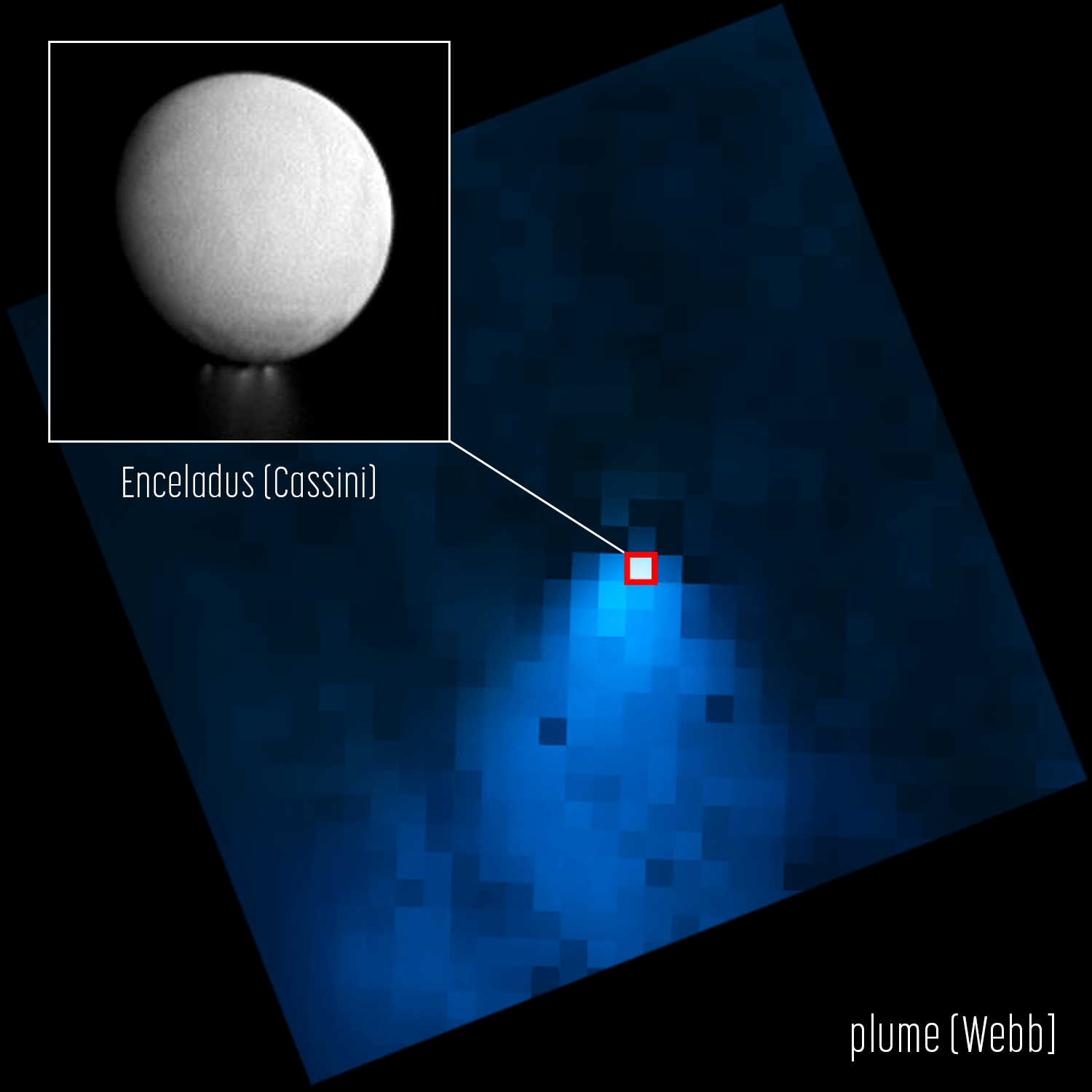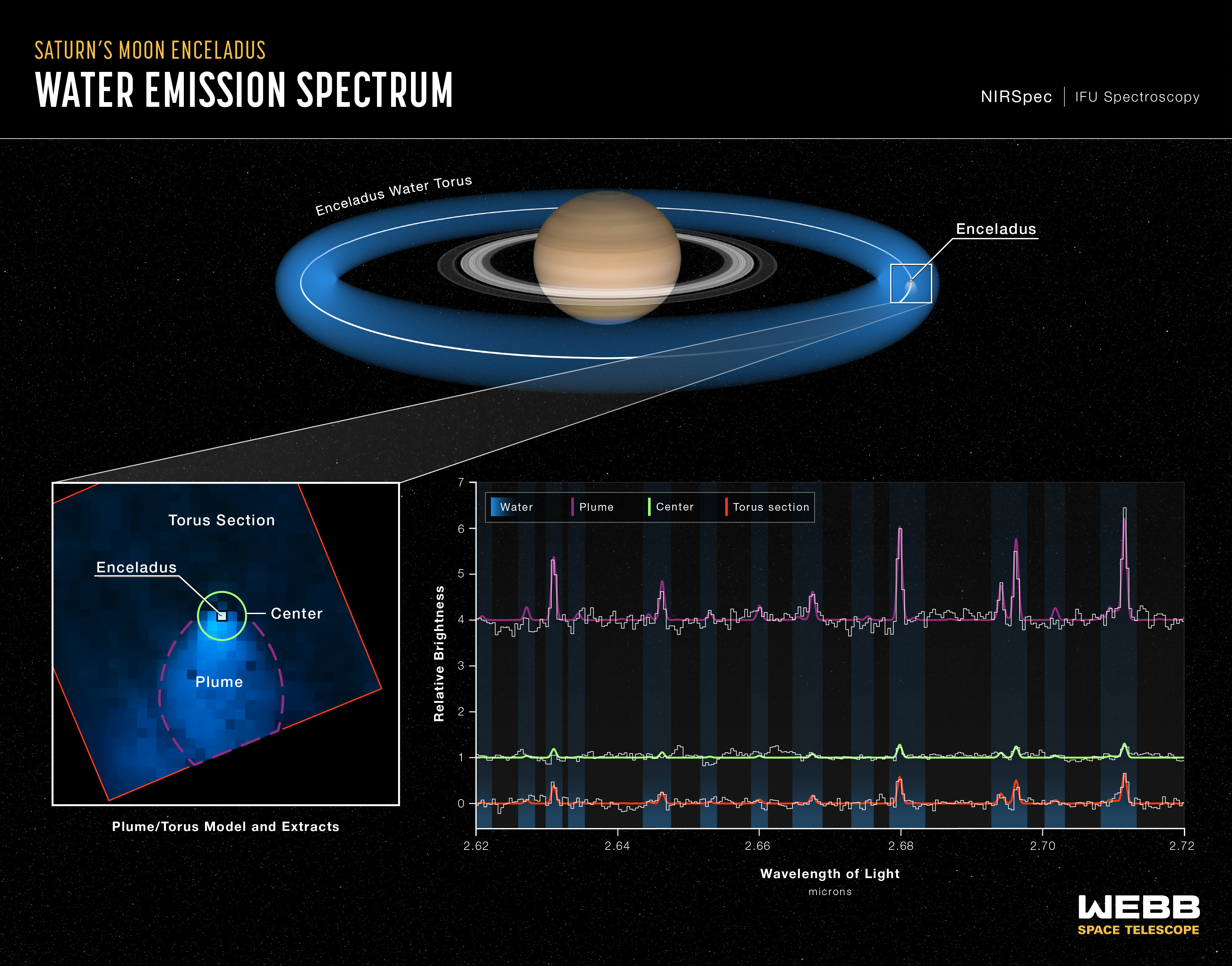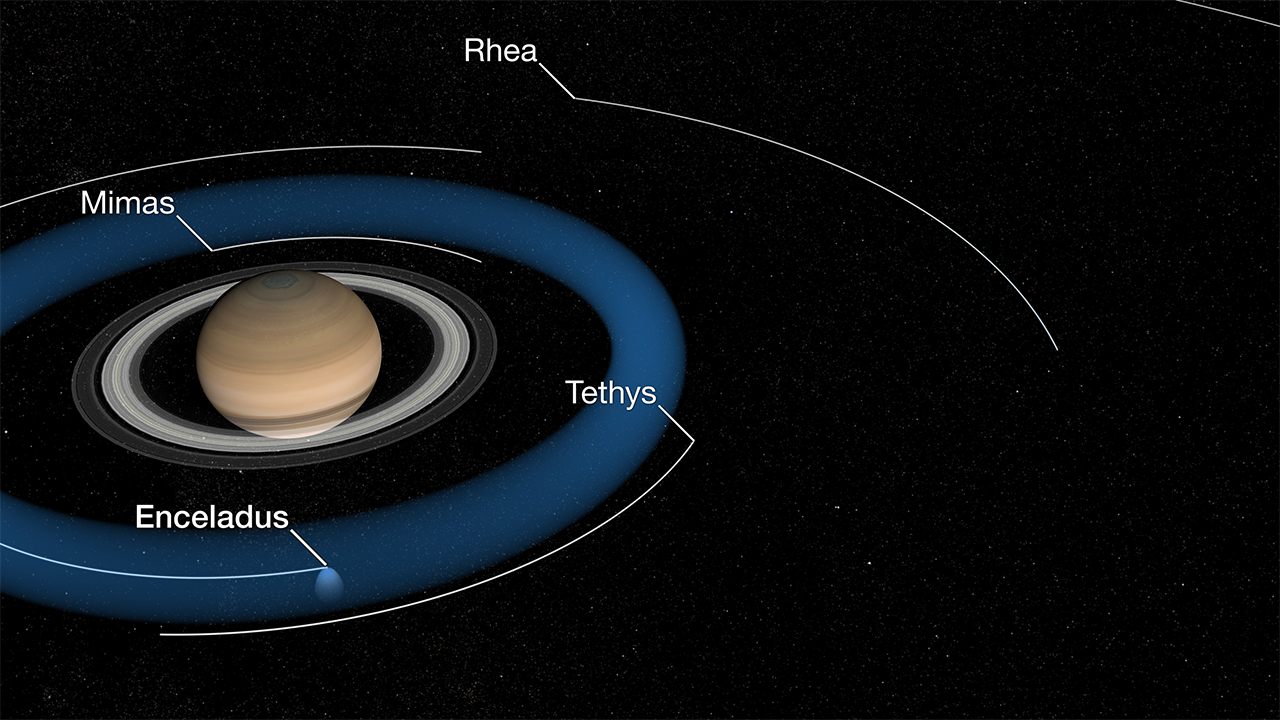1 min read
Enceladus Plume (Webb [NIRSpec] and Cassini Image)

An image from NASA’s James Webb Space Telescope’s NIRSpec (Near-Infrared Spectrograph) shows a water vapor plume jetting from the southern pole of Saturn’s moon Enceladus, extending out more than 20 times the size of the moon itself. The inset, an image from the Cassini orbiter, emphasizes how small Enceladus appears in the Webb image compared to the water plume.
Webb is allowing researchers, for the first time, to directly see how this plume feeds the water supply for the entire system of Saturn and its rings. By analyzing the Webb data, astronomers have determined roughly 30 percent of the water stays within this torus, a fuzzy donut of water that is co-located with Saturn’s “E-ring,” and the other 70 percent escapes to supply the rest of the Saturnian system with water.
Enceladus, an ocean world about four percent the size of Earth, just 313 miles across, is one of the most exciting scientific targets in our solar system in the search for life beyond Earth. A global reservoir of salty water sits below the moon’s icy outer crust, and geyser-like volcanoes spew jets of ice particles, water vapor, and organic chemicals out of crevices in the moon’s surface informally called ‘tiger stripes.’
NIRSpec was built for the European Space Agency (ESA) by a consortium of European companies led by Airbus Defence and Space (ADS) with NASA’s Goddard Space Flight Centre providing its detector and micro-shutter subsystems.
About the Data
- Data DescriptionData DescriptionProposal: A description of the observations, their scientific justification, and the links to the data available in the science archive.
Science Team: The astronomers who planned the observations and analyzed the data. "PI" refers to the Principal Investigator.This image was created with Webb data from proposal: 1250 (G. Villanueva).
- InstrumentInstrumentThe science instrument used to produce the data.NIRSpec IFU
- Exposure DatesExposure DatesThe date(s) that the telescope made its observations and the total exposure time.09 Nov 2022
- Object NameObject NameA name or catalog number that astronomers use to identify an astronomical object.Enceladus
- Object DescriptionObject DescriptionThe type of astronomical object.Water vapor plume from Saturn’s moon Enceladus
- Release DateMay 30, 2023
- Science ReleaseWebb Maps Surprisingly Large Plume Jetting From Saturn’s Moon Enceladus
- CreditImage: NASA, ESA, CSA, Gerónimo Villanueva (NASA-GSFC); Image Processing: Alyssa Pagan (STScI)

This image is an H20 map created from the NIRSpec IFU data aquired by the James Webb Space Telescope. The color results from assigning blue to a monochromatic (grayscale) image.
Related Images & Videos

Enceladus Water Emission Spectrum (NIRSpec IFU)
NASA’s James Webb Space Telescope’s exquisite sensitivity and highly specialized instruments are revealing details into how one of Saturn’s moon’s feeds a water supply to the entire system of the ringed planet. Enceladus, a prime candidate in the search for life elsewhere in our...

Enceladus Torus and Plume
Researchers using NASA’s James Webb Space telescope recently discovered a plume jetting out from the moon’s south pole more than 20 times the size of the moon itself. This animation illustrates how the moon’s water plumes feed the planet’s torus. By analyzing the Webb data,...
Share
Details
Laura Betz
NASA’s Goddard Space Flight Center
Greenbelt, Maryland
laura.e.betz@nasa.gov
NASA, ESA, CSA, Gerónimo Villanueva (NASA-GSFC)
Alyssa Pagan (STScI)































